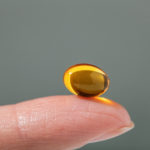By David Blyweiss, M.D., Advanced Natural Wellness
June 26, 2015
- Why you need 15 times more vitamin D
- Three out of four Americans are deficient
- Reclaim your rights to the “sunshine vitamin.”
How much vitamin D do you really need?
Well, if you ask the Food and Nutrition Board (FNB), it’s not much. In fact, their recommendation of a mere 600 IU daily isn’t even a drop in the bucket. Worse yet, this number is based on flawed math.
That’s right. In an unexpected twist of fate, when the analysts went to crunch the numbers, their calculations were off. And they weren’t just a little bit off. They weren’t even off by a lot.
The miscalculation was colossal!
Instead of the 600 IU of vitamin D that they recommend in order to maintain 20 ng/ml concentrations of 25-hydroxy vitamin D in your blood serum, it turns out you could need 10 to 15 times more than that…up to about 9,000 IU.
Now this is a real problem. Already three out of four Americans are running low on this vital nutrient. And you could easily be one of them…without even knowing it.
That’s because there aren’t any obvious symptoms of vitamin D deficiency. The long-term effects however, can be very dangerous to your health. Low levels of this amazing nutrient are linked to heart disease, diabetes, cancer, depression, Alzheimer’s and even your weight.
We don’t have a sunshine shortage here in the U.S. So you’re probably wondering how you could possibly be deficient in this nutrient.
A big part of the problem is our aversion to sunlight. A lot of people slather on sunscreen before heading outdoors. And those who burn easily often add a hat and long-sleeved shirt for even further protection.
Does this sound familiar? Well, all of these measures reduce the amount of vitamin D your body is able to manufacture on its own.
If you live north of Atlanta, the problem is compounded even further. That’s because it’s impossible to get enough vitamin D from sunlight in the northern states between October and March.
And unless you’re eating three to four servings of salmon a week, there are essentially no foods that provide enough vitamin D.
Are You Suffering From...
- Love handles and a pot belly
- Romance that isn't what it used to
- Forgetfulness and inattention
- Low (or no) strength and endurance
- A sex drive that's shifted into neutral...or worse
If so...you may have Mature Male Burnout. Click here to discover more about this unique condition and what you can do about it.
However, you can boost levels of this critical nutrient and enjoy all of the health benefits that come along with it… as long as you’re willing to take things into your own hands.
First off, the test for vitamin D status is called a 25-hydroxy vitamin D test. It isn’t harmful in the least. All it involves is a common blood test. I suggest you have your doctor include this test in your next blood panel.
Second, ignore the FNB recommendations. They recommend 25-hydroxy serum concentrations of 20 ng/ml. But that number should be much higher. Thirty at minimum, 50 or more at best.
And finally, what should you do if you’re in short supply?
Supplement with the most active form of vitamin D available. It’s called vitamin D3, also known as cholecalciferol, and it’s the one that will give you the most benefit.
But don’t stick with the 600 IU the FNB recommends.
That’s much too low. If you’re not deficient I suggest taking about 2,000 IU daily. However, if you’ve been tested as deficient, I recommend taking at least 5,000 IU each day. People who are dark-skinned or overweight may need even more.
And don’t forget about the most natural source of vitamin D – the sun. During warm weather, boosting your levels of this nutrient is as easy as spending 15 or more minutes outdoors each day without sunscreen. (Sunscreen blocks the UV rays necessary for your body to produce vitamin D.)
There’s nothing hard about it…
References
Veugelers PJ, et al. A statistical error in the estimation of the recommended dietary allowance for vitamin D. Nutrients. 2014 Oct 20;6(10):4472-5.
Ginde AA, et al. “Demographic differences and trends of vitamin D insufficiency in the US population, 1988-2004.” Arch Intern Med. 2009;169(6):626-3






